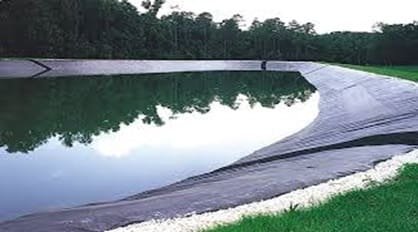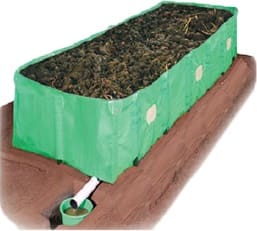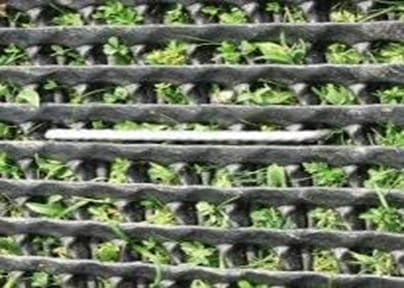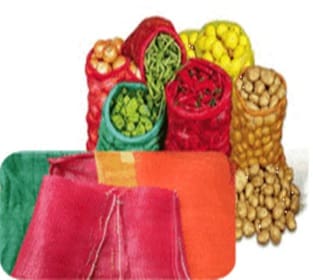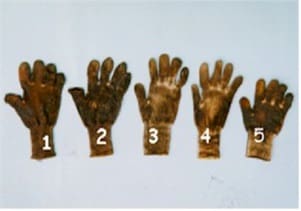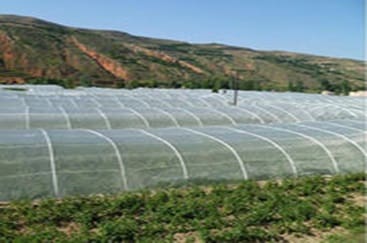Introduction
Technical Textiles can be defined as textile materials and products manufactured primarily for their technical performance and functional properties rather than for aesthetics or decorative characteristics. The term Technical Textiles in common sense can be referred as Industrial textiles, Functional textiles, Performance textiles, High tech textiles, etc. Some of the major reasons for recent demand of technical textiles pertain to their cost effectiveness, durability, high strength, versatility, user friendliness, eco friendliness, logistic convenience, etc. Technical textiles constitute woven, knitted and nonwoven fabrics made from natural fibres (cotton and wool), synthetic fibres (polyester, polyamide, polypropylene, polyethylene, acrylic, elastomeric, p-ararnid, m-aramid and other high performance synthetics), regenerated fibres (viscose rayon, acetate rayon) and inorganic fibres such as carbon, glass, ceramics and steel fibres. Based on the end-use applications, the technical textiles have been broadly classified in to 12 categories namely Agrotech, Buildtech, Clothtech, Geotech, Hometech, Indutech, Mobiletech, Medtech, Oekotech, Packtech, Protech and Sporttech.
It is a known fact that India’s textile and apparel industry is one of the mainstays of the Indian national economy. It is also one of the largest contributing sectors of India’s exports worldwide. The Indian textile industry accounts for 14% of industrial production, which is 4% of GDP, employs 45 million people and accounts for nearly 11% share of the country’s total economy.
Of late, Technical textiles has emerged one of the most innovative sectors with their ever-widening applications in view of growing industrialisation worldwide. Technical Textile products derive their demand from development and industrialization in a country. In India Technical Textile sector has witnessed a growth of 12.4% over the last five years. As per the Baseline Survey of technical textiles industry-2015, this industry in India is estimated to be valued at Rs. 73,688 crore in 2013-14 and is projected to grow to Rs. 92,499 crore by 2015-16 and Rs. 1,16,217 crore by 2017-18. This sector provides new opportunity to the Indian textile industry to have long term sustainable future.
Standardisation of technical textiles has been undertaken at National level through the specially constituted Technical Committees on Protective textiles, Agricultural Textiles, Industrial textiles, Geotextiles, Buildetech, Packtech and Medical textiles. The Textiles Division of BIS has published more than 1202 standards, out of which about 45 % are on the technical textiles and its test methods.
Standardisation Of Agrotech-
Agrotech includes technical textile products used in agriculture, horticulture, fisheries, animal husbandry and forestry. The key products include shade nets, crop covers, vermibeds, mulches, Fishing nets, insect nets, anti hail nets and bird protection nets, lay flat tubes, gloves for tobacco harvesters etc. Agrotech is projected to grow to Rs. 1191 crore in 2015-16 at 12% CAGR and to Rs. 1614 crore by 2017-18 driven primarily by domestic market growth of Shade Nets and export market growth of fishing nets. The consumption of agrotech is driven by subsidy and incentives provided by NHM/NHB for promoting protective cultivation.
Standardization in the field of agrotech is handled by Technical textiles for Agrotech Applications Sectional Committee, TXD 35 with mandate to formulate Indian Standards for terminology, testing and specifications for technical textiles for agrotech application such as horticulture, agriculture, forestry and animal husbandry, etc. The standards on fishing nets are formulated by Textile Materials for Marine/Fishing Purposes Sectional Committee, TXD 18. The synopsis of the important standards published by TXD 35 is detailed below:
i) IS 15351:2015 Agro textiles- Laminated high density polyethylene woven geomembrane for water proof lining
This standard prescribes requirements for high density polyethylene (HDPE) woven Geomembrane laminated with low density polyethylene (LDPE) or suitable combination of LDPE and LLDPE for use as lining for canal, pond and reservoir to control seepage and for proper disposal of industrial effluents, etc. This standard specifies four type of geomembranes of 0.25, 0.50, 0.75 and 1.00 mm thickness.
The primary function of geomembrane applied in ponds/reservoirs is to prevent loss of water due to seepage. The successful performance of geomembrane is based on a good quality material, installation and appropriate design of ponds/reservoirs. To improve the service lifetime of geomembrane, it is essential that the geomembrane are placed on the pond/reservoir surface according to the dimensions and contours of the pond/reservoir ensuring full contact with the sub grade. To achieve this onsite laying, joining and fixing is imperative.
ii) IS 15907:2010 Agro textiles – High density polyethylene (HPDE) woven beds for vermiculture
This standard prescribes constructional and other requirements for high density polyethylene (HDPE) woven beds for vermiculture used in producing compost for agricultural purposes made from 340 GSM, 7 layer laminated fabric. It can produce about 800 to 1000 kgs of vermicompost in one cycle of about 45 days and has the provision of collecting vermiwash. These vermibeds enjoy greater advantages over the traditional concrete ones in terms of space, durability, ease of handling, yield of compost, cost, etc.
iii) IS 16008 (Part 1):2016 Agro textiles – Shade nets for agriculture and horticulture purposes Part 1 Shade nets made from tape yarns
This standard prescribes constructional and other requirements for Agro shade nets manufactured from tape yarns for agriculture and horticulture purposes in protecting/ increasing crop yield by providing controlled climatic conditions for the intended crops. This standard specify three type of shade nets based on the shading factor of 50, 75 and 90%. Shading %age is determined on the basis of amount of light transmitted through the sample and the same is measured with the help of PAR sensor.
The shade nets are mostly used for agriculture and horticulture applications particularly in countries like India where the scorching heat of the sun plays a major role in damaging the crops by sun burning and thus causing severe financial losses. The varying climatic conditions throughout the year, together with the slow but constant rising temperature in the summer months prove the need for shade nets to maximize growth and crop yields. The shade nets helps in controlling the temperature by accumulating the day heat to withstand the low temperatures of night thus help in off season ripening of fruits and vegetables. It also acts as a wind shield and prevents damage to young plants from damage.
- iv) IS 16008 (Part 2):2016 Agro textiles – Shade nets for agriculture and horticulture purposes Part 2 Shade nets made from mono filament yarns
This standard prescribes constructional and other requirements for Agro shade nets manufactured from mono filament yarns for agriculture and horticulture purposes in protecting/ increasing crop yield by providing controlled climatic conditions for the intended crops. This standard specify four type of shade nets based on the shading factor of 35, 50, 75 and 90%.
V)IS 16202 : 2014 Agro textiles – Woven ground covers for horticulture application
This standard prescribes constructional and other requirements for 100 GSM woven ground covers made from UV stabilised polypropylene tape yarns for applications in horticulture. The ground covers are used to meet diverse needs of crops in the horticulture sector like suppression of weed growth around the plant, water conservation, soil temperature moderation, increase in yield etc. by blocking extreme climatic conditions of sunlight or cold.
vi) IS 16190:2014 Agro textiles – High density polyethylene (HDPE) laminated woven fabric lay flat tubes for irrigation purpose
This standard prescribes constructional and other requirements for high density polyethylene (HDPE) laminated woven lay flat tube of internal diameter 50, 63, 75, 90, 110, 125, 150, 175 and 200 mm for irrigation purpose. These lay flat tubes are used at the delivery lines of the agriculture pump sets, which may be exposed to atmosphere and sunlight. These lay flat tubes are manufactured from 260 GSM, HDPE 5 layer laminated fabric and can sustain bursting pressure of 2.6 Kg/cm2.
Transportation of the water from ponds, canal or borewell to the various part of the field for agriculture is of paramount importance. High density polyethylene laminated woven lay flat tube has been developed to easily transport water in the agriculture field and have an advantage of lighter in weight. These lay flat tubes do not require fixed installation and can transport water at the place of choice easily. Farmers are expected to incur less fixed expenditure to irrigate their field at considerably lower running cost as compare to the existing piping systems. These lay flat tubes can sustain the actual field conditions like uneven field surface, extreme climatic conditions, resistance to puncture etc.
vii) IS 16187:2014 Agro textiles — High density polyethylene (HDPE) / polypropylene (PP) leno woven sacks for packaging and storage of fruits and vegetables
This standard prescribes the requirements of high density polyethylene (HDPE)/polypropylene (PP) leno woven sacks for packaging and storage of fruits and vegetables. The fabric used in the manufacture of leno sacks shall be woven on circular or flat looms. This standard covers leno bags of 25 and 50 kg capacity.
viii) IS 16390:2015 Agrotextiles-Nylon knitted seamless gloves for tobacco harvesters
This standard prescribes the constructional details and performance requirements of knitted seamless gloves, white, made from nylon yarn for tobacco harvesters. This standard specifies five sizes of gloves from Size 0 to Size 4.
Tobacco farming presents several hazards to those who cultivate and harvest the plant. Although some of these hazards, such as pesticide exposure and musculoskeletal trauma are faced by workers in other types of agricultural production, tobacco production presents some unique hazards, most notably acute nicotine poisoning, a condition also known as green tobacco sickness. Green tobacco sickness is an occupational poisoning that can affect workers who cultivate and harvest tobacco. It occurs when workers absorb nicotine through the skin as they come into contact with leaves of the mature tobacco plant. Use of the knitted seamless nylon gloves by the workers, while cultivating and harvesting the tobacco plants, can significantly reduce the above hazards.
ix) IS 16513:2016 Agrotextiles – Insect nets for agriculture and horticulture purposes
This standard prescribes constructional and other requirements for insect nets for agriculture and horticulture purposes in protecting crop from insects such as aphids, whitefly, carrot fly, cabbage root fly and caterpillars etc. This standard specifies three types of insect nets based on their mesh size (30, 40 and 50 mesh).
x) IS 16089:2013 Jute Agro-Textile — Sapling bags for growth of Seedling/Sapling — Specification
This standard specifies requirements of jute sapling bag made from hessian cloth to use for growth of sapling in nursery. JAT is a natural fabric, made of jute fibre, that helps retain soil humidity at a conducive level, arrest desiccation of soil and attenuates extremes of temperature due to the intrinsic characteristics of jute and capacity to absorb water/moisture up to about 5 times of its dry weight. On bio-degradation, jute coalesces with soil, increasing its permeability and supplementing its nutrient level. JAT provides all these advantages without affecting eco-ambience adversely
IMPORTANT STANDARDS FINALIZED FOR PUBLICATION ON AGROTECH:
- Agro textiles – High density polyethylene (HDPE) laminated woven lay flat tube for use in mains and submains of drip irrigation system
- Textiles – Polypropylene spun bonded non-woven crop cover fabric for agricultural and horticultural applications
IMPORTANT STANDARDS UNDER DEVELOPMENT UNDER TXD 35:
- Agro textiles – Specification for bird protection nets
- Agro textiles- Specification for hail protection nets
- Agro textiles – PP non woven bunch covers
- Jute agro-textiles for growth of plants and suppression of weeds
CONCLUSION-
Standardization in the field of agrotextiles has been carried out by BIS taking into consideration the latest technological advancement in the field through consultative process of all the stakeholder. Role of standards is vital for growth and development of this sunrise sector of economy. Standards can play a pivotal role in enhancing the quality and productivity of agriculture keeping in pace with government priority to help farmers to double their income in next five years.
J K Gupta Scientist-D (Textiles) Bureau of Indian Standards, New Delhi

